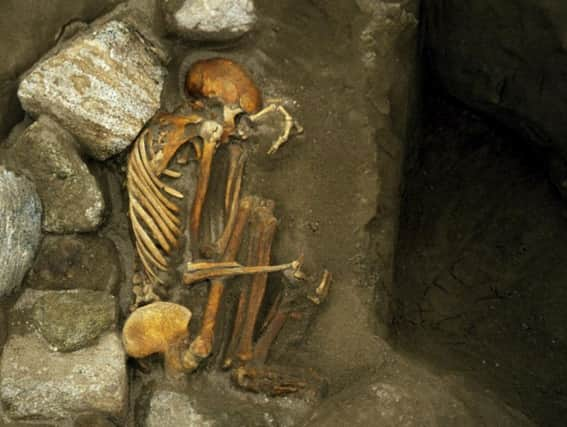The creepy find of the South Uist mummies


Archaeologists found what they believed were the remains of a three-month old child, two female adults and a man under the remnants of the Bronze Age village of Cladh Hallan in 2001.
They had been buried in a crouched foetal position, which was common at the time.
Advertisement
Hide AdAdvertisement
Hide AdExperts from Sheffield University believed the male and one of the females must have been swathed in bandages or tied up with cords or straps of leather, given that the way their limbs were arranged when found.
Tests confirmed the male was around 3,500 years old, with the key female a couple of centuries younger.
There were several curious elements about the discovery, not least that the woman was infact a mix of body parts from three different people that had been arranged to appear as one.
Then, it also emerged that the excavated male was also made up of body parts from different people.Sheffield University's Prof Mike Parker Pearson, an expert in Bronze Age and burial rituals, reported that the mummies had not been buried straight after preservation with the remains curated for some time.
The remains were up to 500 years older than the houses they were buried under.
After death, the bodies continued to play a role in their community, as in the case in some tribal societies around the world, it is believed.
Dead ancestors would have been kept to ask for spiritual advice to help the community make decisions, according to Prof Pearson.
Dr Tom Booth, Wellcome Post-Doctoral Research Associate, Natural History Museum, earlier wrote that the tightly-flexed positions of skeletons were like Peruvian mummy bundles.
Advertisement
Hide AdAdvertisement
Hide AdTwo teeth, part of the wrist and the knee of one of the Cladh Hallan skeletons, had been removed long after they had died, which suggested that the bodies had been tended for an extended length of time.
The remains were likely to have kept in a peat bog where part-mummification - or preservation of the soft tissue - could have taken place in the acidic soil.
The South Uist mummies were the first of their kind found in the British Isles, but its believed these attempts to make dead bodies look as lifelike as possible could have been replicated all over the country.
